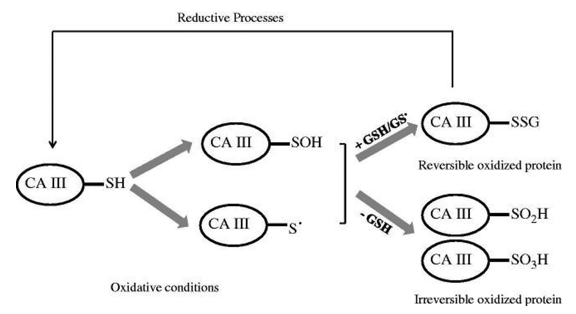
Our promise to you:
Guaranteed product quality, expert customer support.
 24x7 CUSTOMER SERVICE
24x7 CUSTOMER SERVICE
 CONTACT US TO ORDER
CONTACT US TO ORDER
CAIII Gene Editing 
CAIII (carbonic anhydrase III), a cytosolic enzyme, is a member of the carbonic anhydrase family. This is a class of metalloenzymes that catalyze the reversible hydration of carbon dioxide and are differentially expressed in a variety of cell types. The CAIII gene spans 10.3 kb and contains seven exons and six introns. Its expression is strictly tissue-specific, expressed at high levels in skeletal muscle, and much lower in heart and smooth muscle.
It turns out that the physiological role of CA III is very complex, participating in the protection of proteins and cellular systems from irreversible oxidation processes. CA III overexpression leads to an increase in the acidity of the extracellular and intracellular environment. Decreased pH may activate the focal adhesion kinase (FAK) signaling pathway, which in turn plays an important role in cell proliferation, migration, and survival. CA III has been linked to other CAs (such as CA II) and has been linked to autoimmune diseases. CA III dysfunction or antibody response to CA III enzymes may play a role in the pathogenesis of certain autoimmune diseases. Despite many studies, the main functions of CA III have not been identified.
CA III and Diseases
Due to its low catalytic activity, CA III has long been a neglected isoenzyme in the α-CA enzyme family. However, recent studies have shown that CA III is involved in important physiological processes or phenomena, such as oxidative stress, obesity, mitochondrial ATP synthesis, autoimmunity, and carcinogenesis. Therefore, the activation or inhibition of this enzyme by various compounds may provide new opportunities for the treatment of certain diseases related to CA III expression or functional deficiency.
 Figure 1: Schematic representation of reversible and irreversible oxidation of CA III reactive cysteines (Daria M. Monti. 2017).
Figure 1: Schematic representation of reversible and irreversible oxidation of CA III reactive cysteines (Daria M. Monti. 2017).
CAIII Gene Editing Service
CRISPR/Cas9 PlatformCB provides you with comprehensive CRISPR/Cas9 gene editing services and products to a wide range of genomics researchers. As a leading biotechnology company specializing in gene editing, we can help you effectively regulate your target genes editing in vivo and in vitro using the CRISPR/Cas9 system.
- Our customized CAIII gene editing services include
- Constitutive knockout
- Induced expression
- Point mutation
- Conditional knockout
- Rosa26 knock-in
- Fluorescent proteins or immune-tags insertion
- Project workflow
- Strategy design
- gRNA design and synthesis, donor DNA design and synthesis (if needed)
- CRISPR/Cas9 vector construction
- Transfection into the cell lines or microinjection into embryo single cell
- Validate by PCR and sequencing
- Delivery the final models and a final report
- Cell lines we offered
- Blood Lineage Cells (RAW264.7, HMC1.2, K562, U937, etc.)
- Cancer Cell Lines (HEK293, HEK293T, Hela, MCF7, Neuro2a, HepG2, U87, etc.)
- Stem Cells (iPSC)
- Other Cell Lines (NIH3T3, MCF10, HEME, SW10, etc.)
- Animals we offered
- Mouse
- Rat
- Rabbit
- Zebrafish
- C. elegans, etc.
CRISPR/Cas9 PlatformCB has excellent quality management and quality assurance capabilities, providing the best gene editing services and products for academic research, biotechnology research, and drug discovery. We can adapt the solution to your detailed requirements from the early strategic design to the final model. We guarantee to provide our customers with excellent service. If you have any questions, please feel free to contact us.
Related Products at CRISPR/Cas9 PlatformCB
References
- Anna-Kaisa Harju. et al. Carbonic anhydrase III: A neglected isozyme is stepping into the limelight. Journal of Enzyme Inhibition and Medicinal Chemistry. 2013; 28(2): 231-239.
- Dai HY. et al. Carbonic anhydrase III promotes transformation and invasion capability in hepatoma cells through FAK signaling pathway. Mol Carcinog. 2008; 47:956-963.
- Daria M. Monti. et al. Insights into the role of reactive sulfhydryl groups of Carbonic Anhydrase III and VII during oxidative damage. J Enzyme Inhib Med Chem. 2017; 32(1):5-12.
- Anna Di Fiore. et al. Protective Role of Carbonic Anhydrases III and VII in Cellular Defense Mechanisms upon Redox Unbalance. Oxid Med Cell Longev. 2018; 2018:2018306.